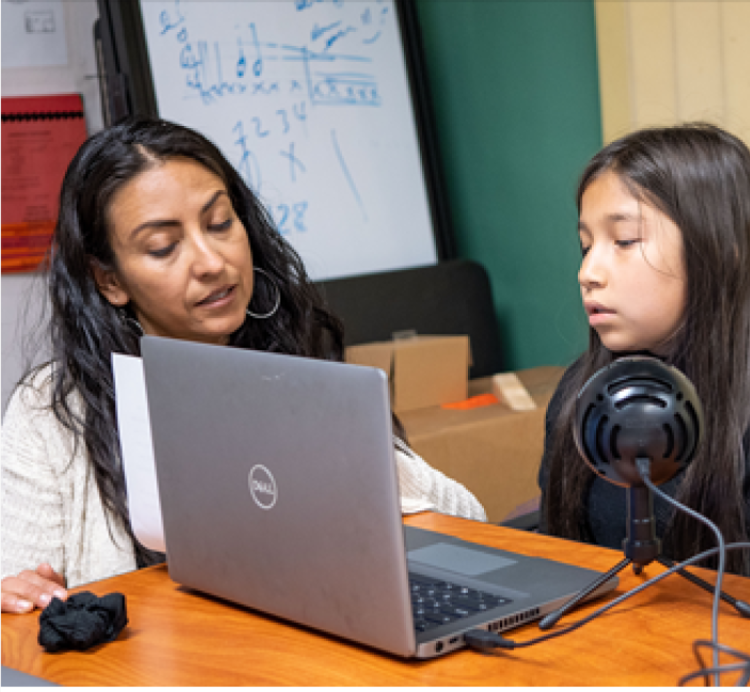Administrator & NASIS Specialist Setup and Pre-Planning
More information can be found for school leaders and systems administrators can be found BIE NASIS website.
Objective: The objective of these instructions is to guide Bureau of Indian Education (BIE) schools in preparing for remote learning in the event of short-term (1-3 days) or long-term disruptions, such as another pandemic. The aim is to ensure continuity in education while maintaining the safety and well-being of students, staff, and communities.
- Establish a Remote Learning Committee: Form a committee comprising school administrators, teachers, IT staff, and community stakeholders to develop a comprehensive remote learning plan. This committee will be responsible for designing, implementing, and monitoring the remote learning framework.
- Technology Infrastructure Assessment: Conduct an assessment of the school's technology infrastructure to identify strengths, weaknesses, and areas of improvement. Ensure all classrooms have reliable internet access, appropriate hardware (e.g., computers, tablets), and necessary software.
- Implement a Learning Management System (LMS): Select and integrate a suitable Learning Management System (LMS) that allows teachers to organize lessons, assignments, and assessments, and enables students to access resources, submit work, and communicate with teachers and peers.
- Teacher Professional Development: Organize regular professional development sessions to train teachers on using the LMS effectively, creating engaging online content, and leveraging remote learning tools. Encourage sharing best practices and collaboration among educators.
- Student and Parent Orientation: Conduct orientation sessions for students and parents to familiarize them with the remote learning platform, tools, and expectations. Provide guidelines on accessing the LMS, submitting assignments, and participating in virtual classrooms.
- Curriculum Adaptation: Develop a plan to adapt the existing curriculum for online delivery. Ensure the curriculum remains rigorous, engaging, and aligns with academic standards. Provide guidelines to teachers on adapting lessons for both synchronous and asynchronous learning.
- Digital Content Creation: Encourage teachers to create and curate digital content, including videos, interactive materials, and online quizzes. Ensure content accessibility for students with varying learning needs.
- Communication and Support: Establish clear communication channels between teachers, students, and parents. Maintain regular communication through emails, virtual office hours, and online forums to address concerns and provide support.
- Assessments and Feedback: Design assessment methods suitable for remote learning, including online quizzes, assignments, and projects. Provide timely feedback to students to ensure continuous progress.
- Equity and Access: Identify students who may face barriers to remote learning, such as limited internet access or lack of devices. Work with local partners and communities to provide necessary resources, like loaner devices and Wi-Fi hotspots, to bridge the digital divide.
- Data Security and Privacy: Implement robust data security measures to protect student and staff information. Comply with relevant data privacy regulations and ensure students' online activities are safeguarded.
- Contingency Plan: Develop a contingency plan for transitioning to remote learning in case of emergencies or outbreaks. Define trigger points and clear instructions for school closure and remote learning activation.
- Regular Evaluation: Periodically evaluate the effectiveness of the remote learning plan and make necessary adjustments based on feedback from stakeholders, students, and teachers.
By following these instructions and building a strong foundation for remote learning, Bureau of Indian Education schools can effectively pivot to remote education during short-term or long-term disruptions, ensuring continuity of education for their students even in challenging times.

Objective: The objective of this contingency plan is to enable a smooth and efficient transition to remote learning in the event of emergencies or outbreaks that require the closure of a Bureau of Indian Education (BIE) school for a short duration of 1-3 days. The plan aims to ensure continuity of education while prioritizing the safety and well-being of students, staff, and the community.
- Trigger Points for Activation: Establish clear trigger points for activating the contingency plan based on factors such as local health department guidelines, the number of COVID-19 cases within the school community, and any potential risk of widespread exposure. This may include considerations for staff and student illness rates, quarantine requirements, and advice from health authorities.
- Communication Protocol: Designate a primary point of contact, such as the school principal or designated administrator, responsible for initiating the contingency plan. Establish a communication protocol that includes notifying staff, students, parents, and the community through multiple channels (e.g., email, phone calls, social media, website) about the activation of remote learning.
- Technology Preparedness: Ensure all teachers and students have access to necessary technology for remote learning. This may include providing loaner devices and internet connectivity options to students who lack access at home. Conduct periodic technology checks to confirm that devices are functional and ready for remote use.
- Learning Management System (LMS) Activation: Activate the chosen Learning Management System (LMS) or remote learning platform promptly. Provide teachers with instructions and training on how to use the LMS effectively to deliver lessons, assignments, and assessments remotely. Ideally the school is using the LMS daily so the switch is minimal and not disruptive to learning.
- Scheduling and Attendance: Develop a remote learning schedule that closely aligns with the regular school timetable. Establish expectations for teacher availability during remote sessions, and communicate guidelines for student attendance and participation.
- Curriculum Adaptation: Encourage teachers to adapt their lessons for online delivery during the remote learning period. Ensure that learning materials and resources are accessible through the LMS and that students understand how to access them.
- Student and Parent Support: Provide clear instructions to students and parents on how to access the remote learning platform and participate in virtual classrooms. Offer technical support and troubleshoot common issues that may arise during the transition.
- Continuous Communication: Maintain regular communication with students, parents, and staff throughout the remote learning period. Provide updates on any changes to the schedule or instructions and address concerns or questions promptly.
- Assessment and Feedback: Adjust assessment methods to suit remote learning conditions. Ensure that teachers provide timely feedback on assignments and assessments to support students' academic progress.
- Data Security and Privacy: Reinforce data security measures to protect student and staff information during remote learning. Remind all stakeholders to adhere to the school's data security policy and guidelines.
- Return-to-School Protocol: Outline the criteria and process for resuming in-person classes after the remote learning period. Consider factors like public health recommendations, local infection rates, and staff and student quarantine requirements before reopening the school.
- Review and Improve: Conduct a thorough review of the effectiveness of the contingency plan after the remote learning period ends. Gather feedback from stakeholders and identify areas for improvement to enhance preparedness for future emergencies.
Objective: The objective of this plan is to ensure the security and privacy of student and staff information during
- Data Security Officer (DSO) Assignment: Designate a qualified individual as the Data Security Officer (DSO) responsible for overseeing and implementing data security measures during the emergency remote learning period. The DSO will serve as the main point of contact for any data security concerns.
- Data Security Policy Review and Communication: Review and update the existing Data Security Policy to address specific considerations during the remote learning period. Communicate the policy changes to all staff, students, and parents to ensure awareness and adherence.
- Staff Training and Awareness: Conduct specialized training sessions for all staff members involved in remote learning on data security best practices, including the handling of sensitive information, password management, and recognizing phishing attempts.
- Secure Remote Access: Ensure that staff members and students can access the remote learning platform through secure virtual private networks (VPNs) or secure login credentials. Utilize encryption protocols to safeguard data transmitted between devices and servers.
- Multi-Factor Authentication (MFA): Implement multi-factor authentication for all staff and students accessing school systems and platforms to enhance security and prevent unauthorized access.
- Limited Data Collection: Minimize the collection of personally identifiable information (PII) to only what is essential for educational purposes. Obtain explicit consent from parents or guardians for data collection and storage, adhering to relevant data privacy regulations.
- Data Storage and Retention: Store data on secure, encrypted servers with limited access to authorized personnel only. Define clear retention periods for different types of data and dispose of unnecessary data securely.
- Secure Video Conferencing: Use encrypted and password-protected video conferencing platforms for virtual classrooms and meetings. Educate teachers, students, and parents on secure video conferencing practices, such as setting unique meeting IDs and enabling waiting rooms.
- Safe File Sharing: Encourage the use of secure file-sharing platforms for assignments and materials, ensuring they require authentication and limit external sharing.
- Monitoring and Auditing: Implement monitoring and auditing systems to detect any potential security breaches or unauthorized access. Regularly review logs and conduct security audits to ensure compliance with data security measures.
- Incident Response Plan: Develop a comprehensive incident response plan outlining the steps to be taken in the event of a data breach or security incident. Clearly define roles and responsibilities for reporting, investigating, and mitigating such incidents.
- Parental Involvement: Engage parents in the data security and privacy process by providing them with information about the measures taken to protect their children's information. Encourage parents to communicate any security concerns they may have.
- Continuous Improvement: Conduct regular reviews and feedback sessions with staff, students, and parents to identify potential vulnerabilities and areas for improvement in the data security and privacy plan.
Use these links to access information based on user type and/or implementation speed.





